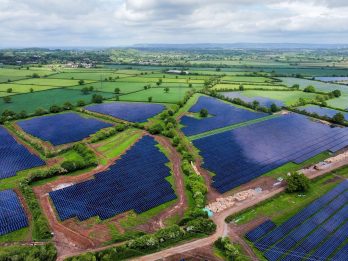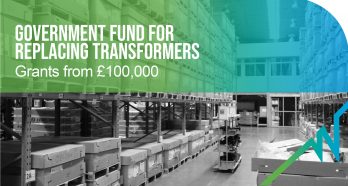Why Energy Efficiency Matters – The 7 Reasons that You Should Look to Your Transformer for Energy Efficiency
The way we consume and generate energy is undergoing a huge revolution, thanks mostly to the ongoing threats of climate change and the allure of renewable, clean energy. But whilst these major developments require big shake ups and a complete change in the way we behave, one aspect of energy usage is often overlooked.
Energy efficiency is crucial to the way we consume energy, and few people know that one of the key sources of energy inefficiency could be their distribution transformer. Right now old transformers from as far back as the 1950s are in common usage, and the power they’re wasting is, by modern standards, absolutely incredible. If you compare a 1MVA Wilson e2 a 1950s transformer of the same rating, it wastes 48,233 kWh per year. That’s a lot of energy, and here’s why prioritising an efficient transformer is important.

1. It decreases your CO2 output
If you increase your energy efficiency you don’t burn more fuel and create CO2. An energy efficient transformer prevents the needless creation of CO2, something we’ve helped companies like McCain achieve by reduce their carbon footprint by 12 tonnes a year.
2. It saves you money
If you use less energy, you spend less money. That might seem obvious, but the ways you can improve your energy efficiency can reduce your energy bills without making any noticeable difference to your company’s performance. When we worked with Tesco, for example, we installed enough Wilson e2 super low loss amorphous transformers across their sites to save them an average of £810,000 a year.
3. It works right now
We all want a clean, renewable energy supply, but right now, it’s going to take a long time and a lot of breakthroughs. While we’re doing our bit at Wilson Power Solutions with a solar roof, the sun doesn’t always shine in Leeds, so we need to examine ways we can decrease our energy usage. Energy efficient transformers like the Wilson e2 work right now, and are already increasing the energy efficiency of over 700 sites across the UK.
4. It’s future proof
If you install a Wilson e2 today, it will be able to operate for at least the next 25 years. As the grid changes and evolves, any alterations won’t stop your energy efficient transformer from working. A transformer you install today that helps reduce your consumption will continue to work, even beyond any upgrades you have in the pipeline.
5. No radical overhaul is required
You don’t need to completely redesign your business around energy efficiency to start reaping the benefits of an energy efficient transformer. While doing things like changing your energy supply or altering processes can require a lot of effort and a big shake up in your working life, installing a Wilson e2 can be easily done, as they slot into existing systems without the need to change the surrounding setup.
6. You can prevent even more waste with Voltage Management
One of the lesser known factors in wasting energy is higher than optimal supply voltage. Using an overgenerous amount of voltage can be wasteful and lead to both an increased energy bill and even potentially damage the long term viability of some equipment. A great way to get control of your voltage is to use the tap changer on a Wilson e2. It adjusts the voltage coming in from the gird and outputs it at a more useful, lower voltage. This means less energy is wasted and the odds of equipment being damaged is greatly decreased, giving you more control over your supply while also providing energy efficiency.
7. The standards for energy efficiency are changing, and for good reason.
According to an EU27 study from 2008 we waste 2.9% of our energy supply on transformer losses every year. To put that into perspective in 2008 we wasted 93.4TWh* of energy on literally powering nothing. That’s roughly enough energy to power the entire UK for 84 days**. If we intend to create a future that relies on us making the most the energy we get then we cannot allow nearly 3 months of power to be expended to no useful end. The EU has already started to change the standards for transformer losses, with the introduction of the EU Eco Design Directive’s Tier 2 standards coming into force in 2021. These expectations can be easily met with the installation of a super low loss amorphous core transformer (such as our Wilson e2 range), which greatly reduce transformer losses with no compromise on output or lifespan.
If you’re interested in learning more about how you can improve your energy efficiency in your business then why not book a session at one of our CPD seminars? You can find out more about our certified sessions on our dedicated page, where you can contact us about organizing a seminar at your site to discover how you can improve your energy efficiency and start saving money, energy and the environment today.
* According to the EU Eco Directives 2014 http://eur-lex.europa.eu/legal-content/EN/TXT/?qid=1440506867412&uri=CELEX:32014R0548
** Based on our consumption from 2016 which was 401.811TWh according to Ofgem’s 2016 report, found here: https://www.ofgem.gov.uk/ofgem-publications/76160/13537-elecgenfactsfspdf
 6 Nov 2017
6 Nov 2017IETF: Industrial Energy Transformation Fund – Phase 3
Industrial emissions account for around 18% of UK emissions. To reach the Net Zero target in 2050, industrial emissions need to fall by around 90% from today’s levels. Industrial Energy Transformation Fund (IETF) launched Phase 3 of industrial grants on Monday 29 January 2024, with the closing date on Friday 19 April 2024, and aims […]
 23 Feb 2024
23 Feb 2024Guide to Replacing Transformers
The third part of the Intergovernmental Panel on Climate Change (IPCC) Sixth Assessment Report (AR6) was published earlier this month. Scientists warn that limiting global warming to 1.5°C is beyond reach but restricting temperature rise to no more than 1.5C to 2C could be the range that will minimize the likelihood of reaching critical environmental […]
 22 Apr 2022
22 Apr 2022IETF: Industrial Energy Transformation Fund FAQ
The Industrial Energy Transformation Fund (IETF) was designed by the UK government to encourage energy-intensive businesses to cut their carbon emissions and reduce their energy waste by switching to energy-efficient low-carbon technologies. A budget of £315 million was allocated by the government to be spent through the IETF. BEIS manages England, Wales and North Ireland’s […]
 4 Apr 2022
4 Apr 2022










